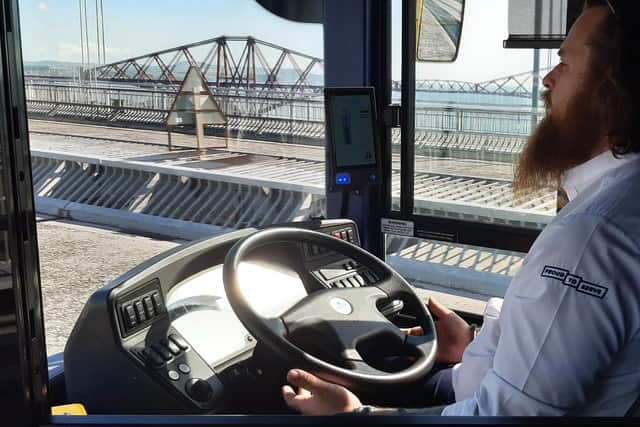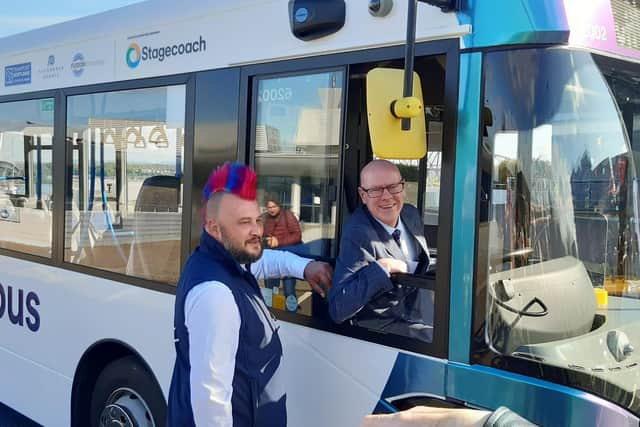UK's first self-driving bus service showcased crossing Forth Road Bridge ahead of passenger launch on Monday
Autonomous buses were shown off on the Forth Road Bridge on Thursday ahead of going into passenger service in the most complex test of the technology anywhere in the world.
The first fare-paying passengers will be able to use the ground-breaking vehicles on a 14-mile route between the Ferrytoll park and ride site near the Forth Road Bridge and Edinburgh Park from Monday.
Advertisement
Hide AdAdvertisement
Hide AdA “safety driver” will remain at the wheel, but most of the route, via the bridge and the M90, M9 and M8 motorways, will be operated in autonomous mode.


Computers on the bus control the speed and steering, and apply the brakes if needed. Officials said the buses would be able to react more quickly than drivers.
The remaining 10 per cent of the route will switch to autonomous control once the buses’ computers have built up more experience of those stretches, which include more complicated junctions.
Passengers will be advised to wear seat belts, but operator Stagecoach said that was no different to in its other buses which were fitted with them.
The CAVForth – Connected and Autonomous Vehicles Forth – trial will continue until 2025 and is Britain’s first full-size autonomous bus operation.


Fusion Processing, which is responsible for the technology, said the route was “by far the most complex and ambitious in the world”.
Stagecoach said a second member of staff – a “bus captain” – would be aboard to help passengers get on and off, sell tickets and answer queries.
The Perth-based bus firm said it eventually expected to be able to dispense with the safety driver, but the bus captain, who is also a qualified driver, would remain on board to take over in an emergency.
Advertisement
Hide AdAdvertisement
Hide AdThat would require new legislation at Westminster, but is expected to come within a few years.
Stagecoach said the move would speed up passenger boarding and alighting by ending the need for them to buy tickets or show passes as they boarded, which could also cut journey times.
Policy director Peter Stephens insisted the project was not aimed at cost saving, but examining how technology could see drivers switch to other roles.
He said it could also make buses more attractive to young people by improving interaction between staff and passengers.
Sensors on the exterior of the bus linked to the “automated drive system” developed by Fusion Processing will detect other vehicles, including cyclists, and any obstacles.
Speaking at an event in South Queensferry to showcase the project, transport minister Kevin Stewart hailed it as a global first for Scotland that would “establish the country’s credentials on the world stage”.
The scheme has been in development for ten years, and when announced in 2018 was due to be launched in 2021, but the date was put back by a range of factors, including the Covid pandemic.
Work on extending the pre-set initial route a further five miles north to Dunfermline to increase the variety of types of roads and traffic conditions is expected to start by the end of the year.
Stagecoach said the service being launched on Monday, to be known as AB1, was a new route, so existing passengers would not be forced to use the new buses.
Comments
Want to join the conversation? Please or to comment on this article.